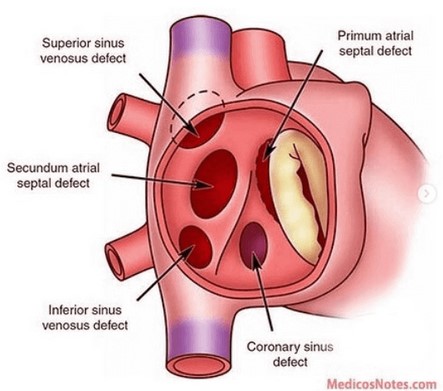Types of Autism Spectrum Disorders (ASD): A Comprehensive Overview
 Autism Spectrum Disorders (ASD) are a group of complex neurodevelopmental disorders that affect a person’s ability to communicate, interact, and behave. ASD is a spectrum disorder, meaning that it affects individuals differently and to varying degrees. There are several types of ASD, each with its own unique set of characteristics and symptoms. This article provides a comprehensive overview of the different types of ASD, including their symptoms, diagnosis, and treatment options.
Autism Spectrum Disorders (ASD) are a group of complex neurodevelopmental disorders that affect a person’s ability to communicate, interact, and behave. ASD is a spectrum disorder, meaning that it affects individuals differently and to varying degrees. There are several types of ASD, each with its own unique set of characteristics and symptoms. This article provides a comprehensive overview of the different types of ASD, including their symptoms, diagnosis, and treatment options.
Exploring the Different Types of Autism Spectrum Disorders: A Comprehensive Overview
Autism spectrum disorder (ASD) is a complex neurological and developmental disorder that affects a person’s ability to communicate and interact with others. It is a spectrum disorder, meaning that it affects individuals differently and to varying degrees. This article provides a comprehensive overview of the different types of autism spectrum disorders, including their symptoms, diagnosis, and treatment.
The most common type of autism spectrum disorder is autism, which is characterized by difficulties with social interaction, communication, and repetitive behaviors. People with autism may have difficulty understanding social cues, making eye contact, and engaging in conversations. They may also have difficulty with motor skills, such as handwriting or tying shoelaces. Other common symptoms include difficulty with change, sensory sensitivities, and restricted interests.
Asperger’s syndrome is another type of autism spectrum disorder. People with Asperger’s syndrome have difficulty with social interaction and communication, but they do not have the same language delays or intellectual disabilities as those with autism. They may also have difficulty with motor skills, but they are usually able to function independently.
Pervasive developmental disorder not otherwise specified (PDD-NOS) is a type of autism spectrum disorder that is characterized by some, but not all, of the symptoms of autism. People with PDD-NOS may have difficulty with social interaction and communication, but they may not have the same language delays or intellectual disabilities as those with autism.
Rett syndrome is a rare type of autism spectrum disorder that is caused by a genetic mutation. It is characterized by a loss of previously acquired skills, such as language and motor skills, as well as repetitive behaviors.
Childhood disintegrative disorder (CDD) is a rare type of autism spectrum disorder that is characterized by a loss of previously acquired skills, such as language and motor skills, as well as social and communication difficulties.
Finally, there is a type of autism spectrum disorder called unspecified autism spectrum disorder (ASD-U). This type of autism spectrum disorder is characterized by some, but not all, of the symptoms of autism.
No matter what type of autism spectrum disorder a person has, it is important to seek out professional help. Early diagnosis and intervention can help improve the quality of life for those with autism spectrum disorder. Treatment may include behavioral therapy, speech therapy, occupational therapy, and medications. It is also important to provide support and understanding to those with autism spectrum disorder and their families.
Understanding the Different Levels of Severity of Autism Spectrum Disorders: A Comprehensive Overview
Autism spectrum disorder (ASD) is a complex neurodevelopmental disorder that affects a person’s ability to communicate, interact, and behave in socially appropriate ways. It is a spectrum disorder, meaning that it can range from mild to severe, and the severity of the disorder can vary greatly from person to person. In this article, we will provide a comprehensive overview of the different levels of severity of ASD.
The first level of severity is mild ASD. People with mild ASD may have difficulty with social interactions, communication, and behavior, but they are able to function independently in most areas of life. They may have difficulty understanding social cues, such as facial expressions and body language, and may have difficulty initiating and maintaining conversations. They may also have difficulty with abstract concepts, such as math and science.
The second level of severity is moderate ASD. People with moderate ASD may have difficulty with social interactions, communication, and behavior, but they may require some assistance in order to function independently. They may have difficulty understanding social cues, such as facial expressions and body language, and may have difficulty initiating and maintaining conversations. They may also have difficulty with abstract concepts, such as math and science.
The third level of severity is severe ASD. People with severe ASD may have difficulty with social interactions, communication, and behavior, and may require significant assistance in order to function independently. They may have difficulty understanding social cues, such as facial expressions and body language, and may have difficulty initiating and maintaining conversations. They may also have difficulty with abstract concepts, such as math and science.
No matter the level of severity, people with ASD can benefit from early intervention and support. Early intervention can help to reduce the severity of symptoms and improve the quality of life for those with ASD. It is important to remember that each person with ASD is unique and that the level of severity can vary greatly from person to person. With the right support and resources, people with ASD can lead fulfilling and meaningful lives.In conclusion, Autism Spectrum Disorders (ASD) is a complex and varied condition that affects individuals in different ways. While there is no single cause of ASD, research has identified a number of risk factors that may contribute to the development of the disorder. It is important to note that ASD is a spectrum disorder, meaning that individuals may experience a wide range of symptoms and levels of severity. With early diagnosis and intervention, individuals with ASD can lead fulfilling and successful lives.